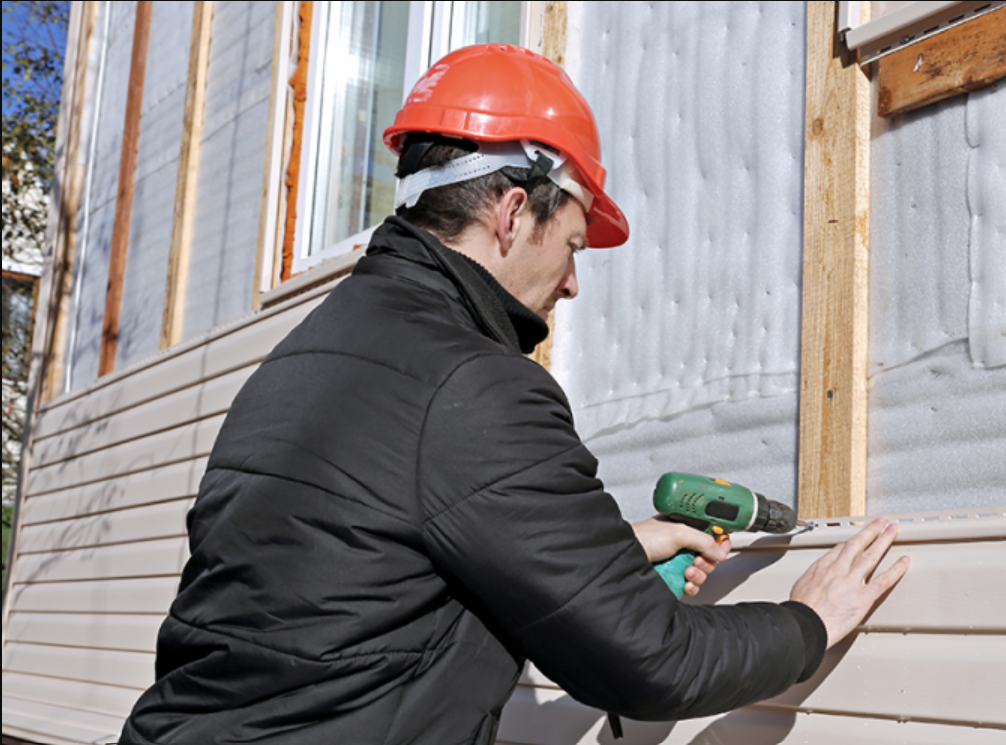Choosing the right siding can make a big impact when it comes to improving your home’s energy efficiency. Vinyl siding, known for its durability and low maintenance, also provides significant insulation benefits that help reduce heat transfer, keeping your home more comfortable year-round. Here’s how vinyl siding can boost your home’s energy efficiency and save you money on energy bills in the long run.
A Built-In Barrier Against Heat Loss
One of the standout options in vinyl siding is insulated vinyl siding. Unlike standard vinyl siding, insulated vinyl features a foam insulation layer attached to each panel’s back. This foam layer acts as a thermal barrier, helping to reduce heat transfer and maintain indoor temperatures.
- Thermal Resistance (R-Value): Insulated vinyl siding adds to your home’s R-value, a measure of thermal resistance. The higher the R-value, the better the material is at preventing heat transfer. By adding insulated vinyl siding, homeowners can achieve better insulation for their walls, especially in homes that lack other forms of wall insulation.
- Minimizing Heat Loss in Winter: During colder months, insulated vinyl siding helps trap warmth inside your home, reducing the need for extra heating and keeping energy costs down.
- Keeping Cool in Summer: Insulated vinyl siding helps retain heat and blocks heat from penetrating your walls in the summer, keeping indoor temperatures more comfortable and reducing air conditioning costs.
Reduced Thermal Bridging with Vinyl Siding
A major source of heat loss in homes is thermal bridging, which occurs when heat escapes through studs and other structural elements in your walls. Vinyl siding from Honest Home Solutions helps mitigate this issue by creating a protective barrier that wraps around the home.
- Thermal Bridging Explained: In typical construction, wooden studs act as conductors, allowing heat to pass through and escape. Vinyl siding, especially when paired with foam insulation, helps cover these gaps, reducing thermal bridging and creating a more energy-efficient barrier.
- Uniform Insulation Coverage: By covering the entire surface of exterior walls, insulated vinyl siding ensures a consistent layer of insulation, minimizing the amount of heat that can travel through the walls, which in turn improves overall energy efficiency.
Sealing Out Drafts and Preventing Air Leakage
Vinyl siding offers excellent protection against drafts and air leaks, which can significantly impact your home’s energy efficiency. Air leakage is one of the most common ways energy is wasted in a home, leading to higher heating and cooling bills.
- Tight Seals for Improved Efficiency: Vinyl siding is designed to fit snugly against your home’s exterior, sealing up gaps where air could enter or escape. With fewer air leaks, your HVAC system doesn’t have to work as hard to keep your home at a consistent temperature, helping you save on energy costs.
- Moisture Resistance Benefits: Vinyl siding is also moisture-resistant, helping prevent the development of mold or rot in the walls, which can impact the insulation’s effectiveness over time. By keeping moisture out, vinyl siding protects your home’s insulation layer and structural elements.
Energy Savings That Add Up Over Time
While insulated vinyl siding may come with a higher upfront cost than standard vinyl, the energy savings it provides can make it a smart investment in the long run. Homeowners installing energy-efficient vinyl siding often see a noticeable decrease in heating and cooling costs.
- Lower Utility Bills Year-Round: With less heat transfer and improved insulation, you’ll likely notice a drop in your monthly utility bills. The exact amount of savings will depend on factors like your climate, home size, and energy rates, but many homeowners find that the savings on energy bills quickly offset the initial cost of insulated vinyl siding.
- Increased Home Value: Energy-efficient upgrades can boost your home’s resale value. Buyers appreciate homes that offer lower energy costs and better indoor comfort, making insulated vinyl siding a desirable feature for potential buyers.
Vinyl Siding as a Sustainable Choice
Improving energy efficiency isn’t just good for your wallet but also for the environment. By reducing the amount of energy needed to heat and cool your home, vinyl siding can help lower your carbon footprint.
- Eco-Friendly Manufacturing Options: Many manufacturers now offer eco-friendly vinyl siding options, produced with recyclable materials and low-impact manufacturing processes. Some insulated vinyl siding options even use expanded polystyrene (EPS) foam insulation, which is recyclable and often made with environmentally friendly processes.
- Longevity and Low Maintenance: Vinyl siding is highly durable and resistant to damage, which means it doesn’t need frequent replacement or repairs. This longevity reduces the demand for additional materials and resources over time, adding to its sustainability.
Choosing the Right Vinyl Siding for Your Climate
When selecting vinyl siding, it’s essential to consider your region’s climate and your home’s specific insulation needs. Insulated vinyl siding is an ideal choice for homes in colder climates, as it helps retain heat in winter and provides an extra layer of insulation against chilly weather. In warmer climates, insulated vinyl siding can prevent heat from penetrating your home, making it easier to keep indoor temperatures cool and comfortable.
For homeowners in temperate climates, standard vinyl siding can still offer energy efficiency benefits without the added insulation layer, providing a budget-friendly option for improved energy savings.
Boost Your Home’s Efficiency with Vinyl Siding
Vinyl siding is more than just a way to enhance your home’s appearance—it’s also a smart way to improve energy efficiency. With insulated vinyl siding, you can create a barrier against heat transfer, minimize air leaks, and enjoy a more comfortable home environment year-round. You’ll benefit from lower utility bills, a reduced carbon footprint, and increased property value by making an energy-efficient choice for your home’s exterior.

